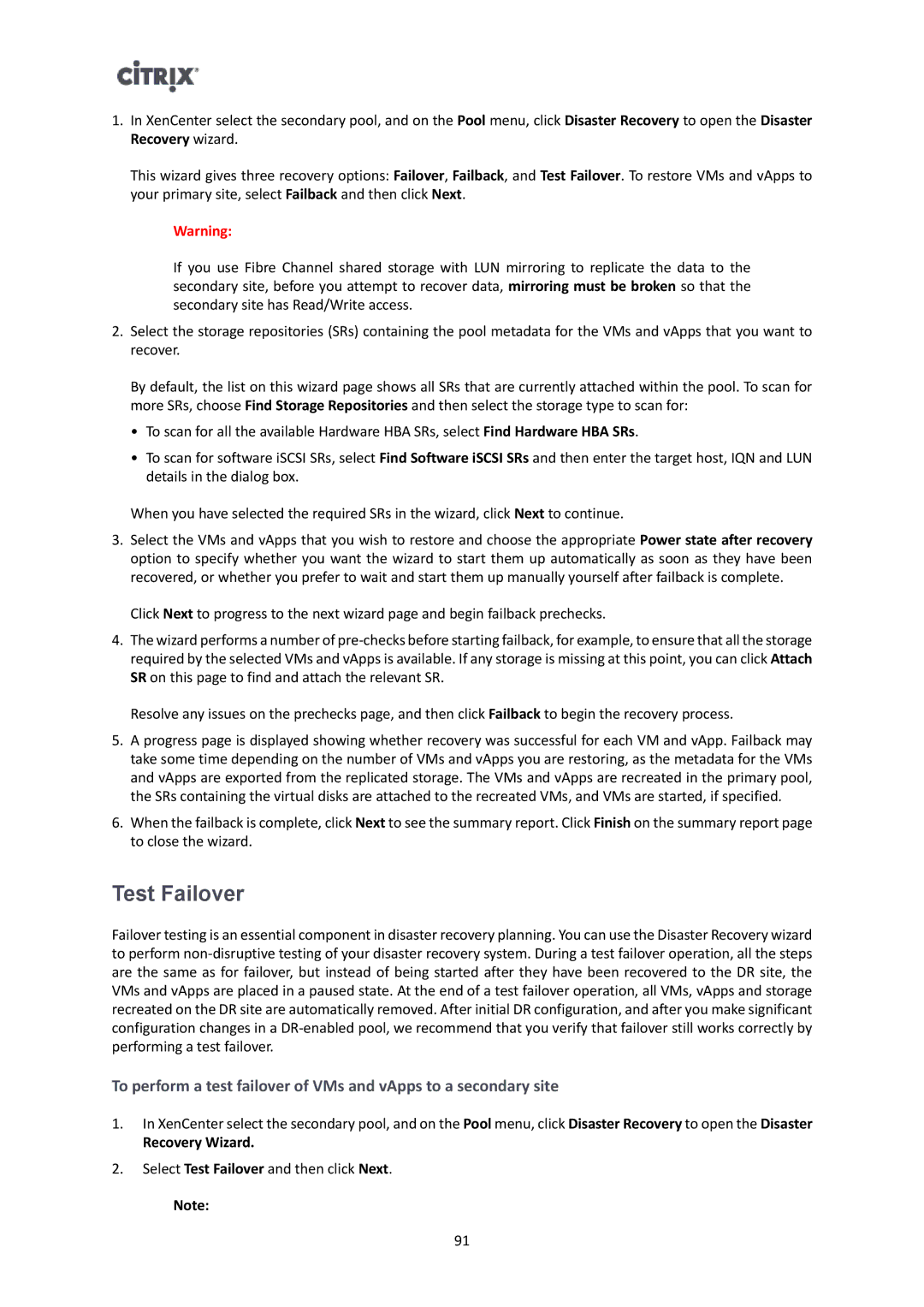1.In XenCenter select the secondary pool, and on the Pool menu, click Disaster Recovery to open the Disaster Recovery wizard.
This wizard gives three recovery options: Failover, Failback, and Test Failover. To restore VMs and vApps to your primary site, select Failback and then click Next.
Warning:
If you use Fibre Channel shared storage with LUN mirroring to replicate the data to the secondary site, before you attempt to recover data, mirroring must be broken so that the secondary site has Read/Write access.
2.Select the storage repositories (SRs) containing the pool metadata for the VMs and vApps that you want to recover.
By default, the list on this wizard page shows all SRs that are currently attached within the pool. To scan for more SRs, choose Find Storage Repositories and then select the storage type to scan for:
•To scan for all the available Hardware HBA SRs, select Find Hardware HBA SRs.
•To scan for software iSCSI SRs, select Find Software iSCSI SRs and then enter the target host, IQN and LUN details in the dialog box.
When you have selected the required SRs in the wizard, click Next to continue.
3.Select the VMs and vApps that you wish to restore and choose the appropriate Power state after recovery option to specify whether you want the wizard to start them up automatically as soon as they have been recovered, or whether you prefer to wait and start them up manually yourself after failback is complete.
Click Next to progress to the next wizard page and begin failback prechecks.
4.The wizard performs a number of
Resolve any issues on the prechecks page, and then click Failback to begin the recovery process.
5.A progress page is displayed showing whether recovery was successful for each VM and vApp. Failback may take some time depending on the number of VMs and vApps you are restoring, as the metadata for the VMs and vApps are exported from the replicated storage. The VMs and vApps are recreated in the primary pool, the SRs containing the virtual disks are attached to the recreated VMs, and VMs are started, if specified.
6.When the failback is complete, click Next to see the summary report. Click Finish on the summary report page to close the wizard.
Test Failover
Failover testing is an essential component in disaster recovery planning. You can use the Disaster Recovery wizard to perform
To perform a test failover of VMs and vApps to a secondary site
1.In XenCenter select the secondary pool, and on the Pool menu, click Disaster Recovery to open the Disaster
Recovery Wizard.
2.Select Test Failover and then click Next.
Note:
91
